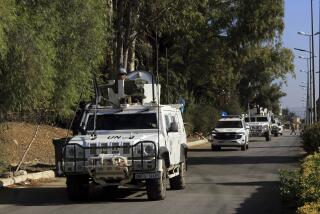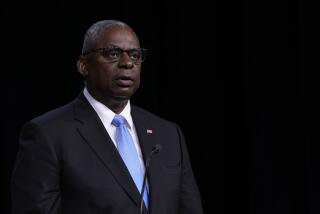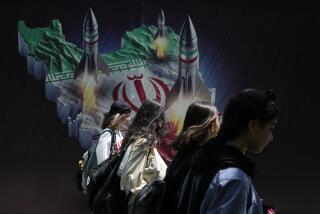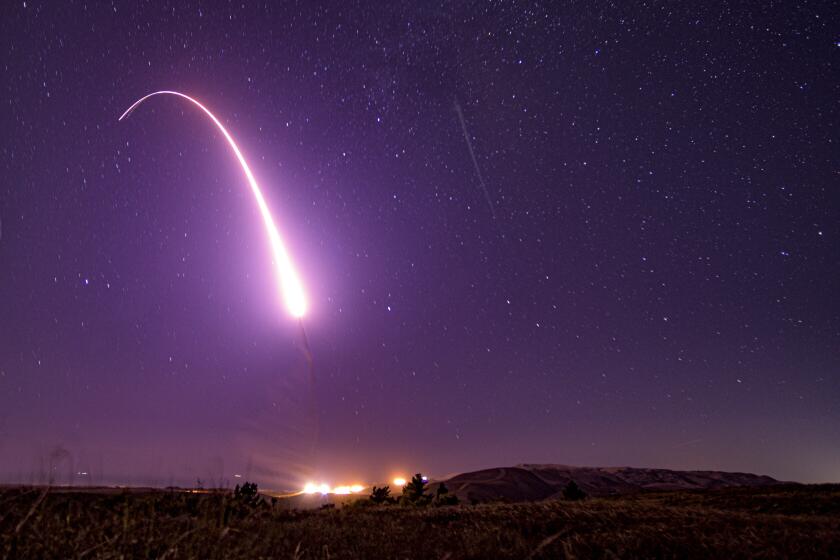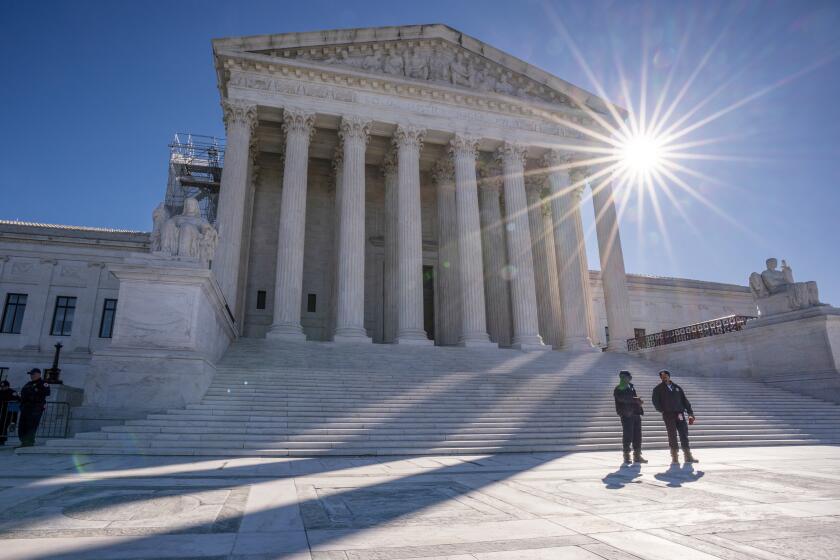Iraq’s Threat to Shoot Down Plane Intensifies Dispute
- Share via
UNITED NATIONS — The dispute between Iraq and the United Nations intensified Monday when Iraq blocked U.N. arms inspectors from investigating a missile site and issued a veiled threat to shoot down a U.S. reconnaissance plane on loan to the inspection program.
Officials here and in Washington stressed that they are continuing to seek a diplomatic, rather than military, solution to the standoff. But Bill Richardson, the U.S. ambassador to the United Nations, said the threat to the U.N. aircraft added a “very disturbing” new element to the crisis.
“This is an irresponsible escalation, which we view with grave concern,” Richardson said. “This is a direct military threat to the United Nations.”
A U.S. U-2 high-altitude surveillance aircraft based in Saudi Arabia is on loan to the U.N. arms control team, which uses it to secretly photograph suspected weapons sites. In a letter to chief U.N. weapons inspector Richard Butler that was forwarded to the Security Council on Monday, Iraqi Ambassador to the U.N. Nizar Hamdoun said Iraq could not vouch for the safety of the U-2 plane on its next flight because antiaircraft crews are on high alert against the possibility of a U.S. airstrike.
Butler said late Monday that a U-2 flight will be made this week as scheduled.
*
An end to the U-2 flights was one of the demands made by the government of Iraqi President Saddam Hussein last week in a letter to the United Nations that touched off the latest Persian Gulf confrontation. Iraq accused the United States of using the U.N. weapons commission as a cover for espionage and declared it would no longer accept U.S. participation in the inspections. It gave Americans already on duty with the U.N. in Baghdad until the end of the day on Wednesday to leave the country.
The commission, set up after a U.S.-led alliance defeated Iraq in the 1991 Persian Gulf War, is charged with eliminating Iraq’s capacity for nuclear, chemical and biological warfare. Until the commission completes its work, the Security Council cannot fully lift the seven-year embargo on Iraqi oil sales and other economic sanctions imposed on Iraq.
In the developments Monday:
* The U.N. arms inspectors ended a self-imposed suspension of field activities and sent three investigative teams out of Baghdad. When the first group arrived at a missile site for an inspection, however, Iraqi officials refused entry to the American member. The U.N. then pulled all three teams back to their Baghdad office, saying they could not complete their work without U.S. participation. Butler said inspectors, including the seven Americans currently with the commission in Iraq, will go back into the field today.
* Iraq’s government agreed to receive three special envoys from U.N. Secretary-General Kofi Annan, who are scheduled to arrive in Baghdad on Wednesday. The trio will be accompanied by Hamdoun and are scheduled to report back to the Security Council on Monday, Annan said.
The official Iraqi News Agency quoted Hussein as welcoming the initiative and citing a “need for dialogue to put things in order.” But the United Nations said the three diplomats--Lakhdar Brahimi of Algeria, Emilio Cardenas of Argentina and Jan Eliasson of Sweden--are not going to Baghdad to bargain. “There’s nothing to negotiate,” said Fred Eckhard, Annan’s spokesman. “The next step is up to Iraq, and this mission is to facilitate that next step.”
* Butler authorized the next U-2 flight, despite Hamdoun’s warning. While military planners considered dispatching F-16s to escort the unarmed U-2 over Iraqi territory, that option was put on the back burner because the fighters cannot fly as high as a U-2 and therefore can provide only limited protection.
Military experts said the principal danger to the flights will be from SA-2 surface-to-air missiles, which were sold to Iraq before the Gulf War by the former Soviet Union. Iraq is believed to have two dozen SA-2 missile batteries. Each battery has three to six launchers, and each launcher fires one or two missiles.
Bringing down a U-2 would be difficult, but not impossible, analysts said. “Even though it’s moving fast, a U-2 is on the radar screen a long time. It’s traversing a lot of space so there’s a lot of time to engage it,” said Kenneth M. Pollack, an Iraq military expert at the Washington Institute for Near East Policy.
U.S. military strength in the Persian Gulf includes 20,000 troops, about 200 warplanes and 17 ships, according to the Pentagon. Britain and France also have aircraft stationed in Saudi Arabia for U.N. use, although France probably would be a reluctant participant in any attack on Iraq.
*
Analysts suggested a variety of political motives for Hussein’s latest challenge. In part, it stems from a long-term effort to divide the United States from other members of the Security Council.
“Every time Saddam confronts the U.S. and survives, every time he shows bravery in the face of ‘American imperialism,’ he’s won according to his own terms,” said Anthony Cordesman, a military expert at the Center for Strategic and International Studies in Washington. “Having provoked this crisis, he can also afford to lose it and then do it again and again in an attempt to split the allies as sanctions fatigue deepens.”
Turner reported from the United Nations and Wright from Washington.
More to Read
Sign up for Essential California
The most important California stories and recommendations in your inbox every morning.
You may occasionally receive promotional content from the Los Angeles Times.
